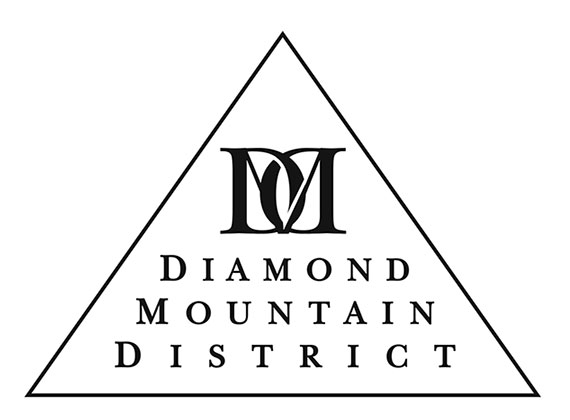VINEYARD
Diamond Mountain District

Soils
Climate
The Diamond Mountain District shares with the rest of the Napa Valley the classic Mediterranean climate, with rainfall confined to the winter and early spring. Located 40 miles east of the Pacific Ocean and 40 miles north of San Pablo Bay, the District benefits from the aspect of a relatively southern latitude in proximity to a cold ocean; hot summer days are often followed by cool foggy nights, with 40 degree differentials not uncommon. Tributary creeks of the Russian River drain the western flanks of Diamond Mountain, along which pass marine breezes that keep daytime maximum temperatures on the northeast facing slopes during the summer months up to 10 degrees lower than on the valley floor around the town of Calistoga. Annual precipitation ranges from 30 to 40 inches per year, significantly higher than the floor of the Napa Valley, and allowing for the option of dry farming.

History
While plantings on Diamond Mountain may pre-date the Gold Rush, the first confirmed plantings date to the early 1860’s. Robert Louis Stevenson visited the vineyard and winery of Jacob Schram on Diamond Mountain in 1880, as famously recounted in The Silverado Squatters. In 1888 Richard Schmidt established a gravity flow winery on Diamond Mountain, supplying an enthusiastic market rendered thirsty by the phylloxera epidemic in Europe. In 1890 a woman vineyardist, Adele Furniss, planted vineyards, and built a beautiful home, winery, and barn along Diamond Mountain Rd., calling her estate “Esperanza Villa.” Early in the new century, Andrew Rasmussen, the superintendent of the Greystone Winery in St. Helena, planted 40 acres near the top of Diamond Mountain Road. These early viticultural pioneers passed over the easily accessible and available valley floor plantings in favor of the less convenient hillside parcels, recognizing the superiority of the upland soils and the inherent protection from frost. But these plantings declined over the next few decades in the face of poor economic conditions and the Prohibition era.
The mid-1960’s brought a wave of new energy, with the Davies Family renovating the Schram estate to focus on sparkling wine. In 1967 Al Brounstein began planting Cabernet Sauvignon, and as his wines were released in the 1970’s they quickly established the reputation of the District as a special terroir for this variety. Today there are 20 vineyards on Diamond Mountain, with 16 wineries labeling Diamond Mountain District wines, and more on the way.
For more detailed information about the Diamond Mountain District read “Mining Jewels On Diamond Mountain” by Steve Pitcher that appeared as the cover article in the June/July 2005 issue of The Wine News. Also, the inaugural issue of the San Francisco Chronicle’s Wine Section (January 2, 2003) had an article by Linda Murphy called “Jewels of Diamond Mountain.” Both of these excellent articles may be accessed at dyerwine.com in the section labeled “The Buzz.”

